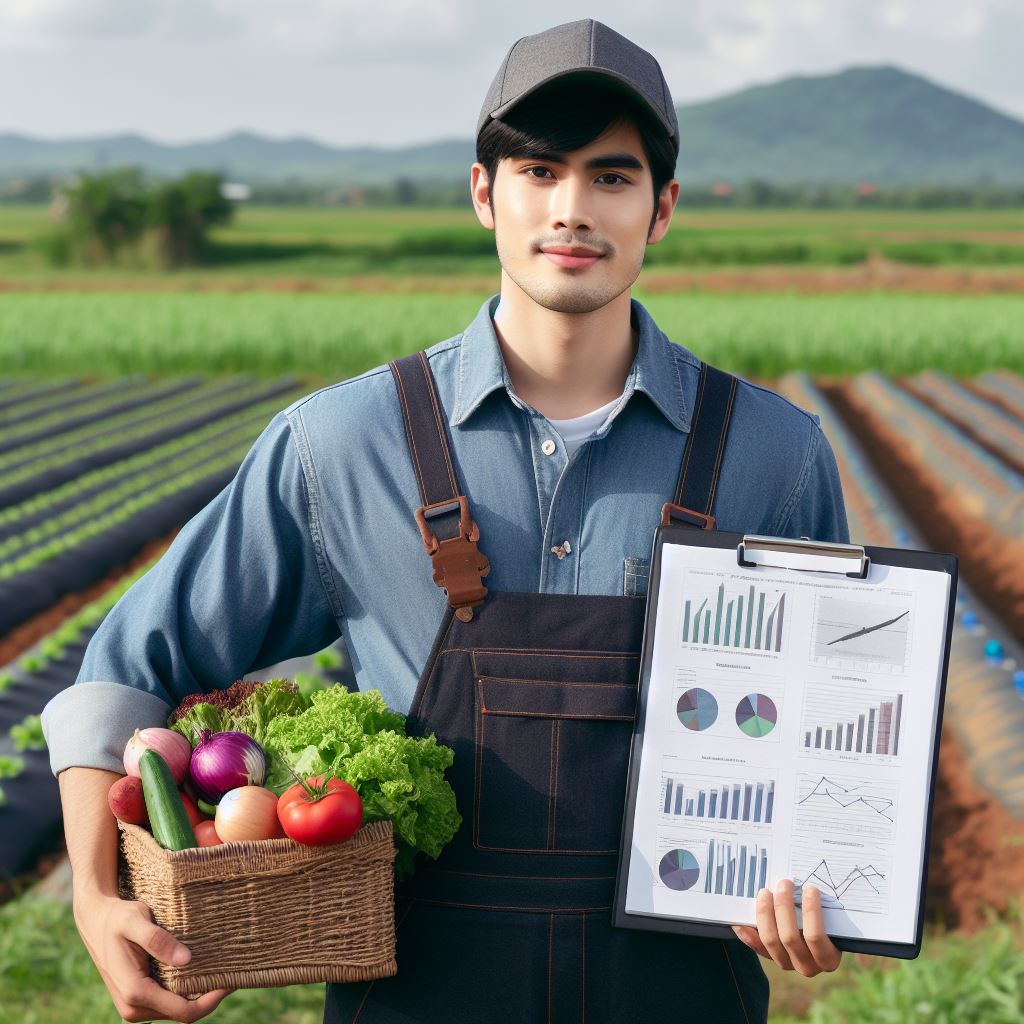Introduction
Let’s explore Farm Subsidies Qualifies.
Briefly explain the relevance and importance of farm subsidies in the agricultural industry
Farm subsidies play a crucial role in supporting the agricultural industry.
They provide vital financial aid to farmers, helping them overcome challenges and ensure food security.
In 2024, farm subsidies will change, specifically in the qualifying criteria.
This section will explore the significance of these changes and how they will impact farmers.
Farm subsidies are essential as they promote stability in the agricultural sector by mitigating the risks that farmers face.
These risks include unpredictable weather patterns, fluctuating market prices, and high input costs.
Subsidies help farmers withstand these challenges and continue producing food.
Introduce the topic of 2024 farm subsidies and the focus on qualifying criteria
In 2024, the focus of farm subsidies will shift towards qualifying criteria.
These criteria determine which farmers are eligible to receive financial aid.
Understanding the qualifications is vital for farmers to ensure they meet the requirements and can secure subsidies.
The updated qualifying criteria aim to support and prioritize certain aspects of the agricultural industry.
This may include promoting sustainable farming practices, encouraging the adoption of new technologies, and providing aid to farmers in disadvantaged regions.
Farmers must stay informed about these changes and assess how they can meet the new criteria.
However, these changes may also pose challenges for some farmers, especially those who do not meet the new qualifying criteria.
Transform Your Agribusiness
Unlock your farm's potential with expert advice tailored to your needs. Get actionable steps that drive real results.
Get StartedPolicymakers need to provide guidance and support to farmers who may be affected by these changes.
In general, farm subsidies play a vital role in the agricultural industry, ensuring stability and food security.
The focus on qualifying criteria in 2024 will shape who receives financial aid.
Farmers need to stay informed and adapt to these changes to continue benefiting from farm subsidies.
Policymakers must also consider the potential challenges that these changes may pose for certain farmers.
Overview of the Farm Subsidy Program
Agriculture is a crucial sector for any nation’s economy, and the United States is no exception.
To support farmers and ensure food security, the government implements the Farm Subsidy Program.
This program aims to provide financial assistance to farmers and stimulate agricultural production.
Purpose and Objectives of the Farm Subsidy Program
- Stability: The primary purpose of the farm subsidy program is to ensure the stability of the agricultural sector. By providing financial aid to farmers, the government aims to reduce income volatility caused by fluctuating crop prices and uncertain weather conditions.
- Income Support: Another objective of farm subsidies is to support farmers by supplementing their income. Agriculture is often susceptible to market forces beyond farmers’ control, and subsidies provide a safety net during challenging times.
- Market Competitiveness: The subsidy program also intends to enhance the competitiveness of domestic farmers. By assisting them with financial resources, farmers can invest in advanced technologies, modern equipment, and research, which ultimately boosts productivity and enables them to compete globally.
Role of Subsidies in Supporting Farmers and Maintaining Food Security
Subsidies play a crucial role in supporting farmers and maintaining food security in the United States.
These incentives provide stability and confidence to farmers, ensuring a reliable food supply for the nation.
Here are some ways subsidies contribute:
- Price Stabilization: Subsidies help stabilize crop prices, preventing sudden spikes or crashes. This stability ensures that farmers receive fair compensation for their produce while consumers enjoy predictable prices at the grocery stores.
- Risk Mitigation: Farmers face numerous risks, such as adverse weather conditions, pests, and diseases. Subsidies serve as a risk management measure, providing financial support when these unavoidable challenges arise.
- Promoting Farm Diversity: By supporting different types of farms, subsidies encourage agricultural diversity. This diversity contributes to a broader range of crops and livestock, reducing dependence on a single commodity and enhancing food security.
Background on the History and Evolution of Farm Subsidies in the United States
Farm subsidies have a long history in the United States, dating back to the early 20th century.
Here is a brief overview of the evolution of farm subsidies:
- The 1920s-1930s: With the Great Depression and the Dust Bowl crisis, the government implemented the Agricultural Adjustment Act (AAA) in 1933. The AAA aimed to stabilize farm incomes through production controls and price support.
- 1940s-1950s: World War II led to increased demand for agricultural products. The government introduced additional subsidy programs to encourage production and support the war effort.
- 1960s-1970s: The focus shifted from price support to direct payments and income support programs. These programs aimed to provide a safety net for farmers during economic downturns.
- 1980s-1990s: With growing concerns about overproduction and environmental impacts, the government implemented programs to promote conservation practices and reduce surplus production.
- The 2000s-2010s: The farm subsidy programs underwent significant reforms, aiming to reduce market distortions, limit support to wealthy farmers, and enhance environmental sustainability.
- 2020s: The future of farm subsidies remains uncertain, as discussions continue on how to better target assistance, support small-scale farmers, and address emerging challenges such as climate change.
Therefore, the Farm Subsidy Program plays a vital role in supporting farmers, ensuring food security, and maintaining the stability of the agricultural sector in the United States.
By understanding the purpose, objectives, and historical context of these subsidies, we can appreciate their significance and the ongoing efforts to improve their effectiveness.
Read: Top 5 Subsidies for Organic Farmers
Changes and Trends in 2024 Farm Subsidies
Significant Policy Changes or Reforms in 2024
- New eligibility criteria have been introduced to determine who qualifies for farm subsidies in 2024.
- Previously, subsidies were given based on factors like crop production and acreage, but now income levels also play a crucial role.
- These changes aim to ensure that subsidies are provided to those farmers who truly need financial support.
- Additionally, there is an increased focus on promoting sustainable farming practices through subsidies.
- Farmers who adopt environmentally friendly techniques will receive extra financial incentives.
Driving Factors Behind Policy Changes
- Economic conditions and budget constraints have influenced the implementation of these policy changes.
- Government agencies aim to allocate subsidies more effectively, targeting farmers most in need.
- By considering income levels, subsidies can be distributed more equitably among all eligible farmers.
- Political considerations also played a role, as public pressure grew for subsidies to align with sustainable and environmentally friendly practices.
Potential Implications for Farmers and the Agricultural Sector
- These changes in farm subsidy eligibility criteria will likely reshape the farming landscape in 2024.
- While some farmers may lose out on subsidies, those with lower incomes will benefit from increased support.
- It will encourage farmers to adopt sustainable practices, leading to a more environmentally friendly agricultural sector.
- However, not all farmers may be able to immediately adapt to the new requirements, requiring additional support.
- The agricultural sector may witness a shift towards smaller or diversified farming operations.
- Overall, these changes aim to promote a more equitable, sustainable, and economically viable farming sector in 2024.
Generally, the implementation of significant policy changes and reforms in 2024 farm subsidies has brought about a new set of eligibility criteria aimed at providing financial support to farmers based on their income levels and promoting sustainable practices.
The driving factors behind these changes include economic conditions, budget constraints, and political considerations.
While these reforms may have implications for some farmers, such as the loss or gain of subsidies, they ultimately aim to create a more equitable, environmentally friendly, and economically viable agricultural sector.
Read: Latest USDA Grants for Small Farms
Eligibility Criteria for 2024 Farm Subsidies
Basic Qualifications for Subsidy Eligibility
To qualify for subsidies in 2024, applicants must meet certain basic qualifications.
These requirements ensure that the subsidies are directed to those who genuinely need them.
- Applicants must be actively engaged in farming or agricultural operations.
- They must have a valid farm number issued by the appropriate government agency.
- Applicants must demonstrate compliance with environmental regulations and conservation practices.
- They must have proper documentation and records of their farming activities.
- Applicants are required to have a minimum number of acres under cultivation.
- Farmers must also demonstrate that they have made efforts to diversify their operations.
Meeting these basic qualifications ensures that only legitimate farmers and agricultural operations benefit from the subsidies, preventing misuse of public funds.
Income Thresholds and Limitations for Receiving Subsidies
In 2024, there are income thresholds and limitations set to determine the eligibility of applicants for farm subsidies.
Showcase Your Farming Business
Publish your professional farming services profile on our blog for a one-time fee of $200 and reach a dedicated audience of farmers and agribusiness owners.
Publish Your ProfileThese measures assist in directing subsidies to those who truly need the financial support.
- Applicants must have an average adjusted gross income (AGI) below a certain threshold.
- The income limits may vary depending on whether the applicant is an individual or a married couple.
- Individuals with an AGI above the specified threshold will be ineligible for subsidies.
- The income limits are periodically adjusted to account for inflation and changes in economic conditions.
- Applicants must provide tax returns or other financial documentation to verify their income.
Setting income thresholds and limitations ensures that subsidies are allocated to farmers and agricultural operations facing financial challenges, focusing on those in genuine need.
New or Specific Criteria for 2024 Subsidies
In 2024, there may be new or specific criteria introduced to further refine eligibility for farm subsidies.
These criteria aim to better target and tailor the subsidies to specific needs and challenges that farmers face.
- Additional criteria may be introduced to enhance the sustainability and environmental stewardship of farming operations.
- Efforts may be made to encourage young and beginning farmers by implementing special eligibility provisions.
- New criteria could prioritize funding for research and development in innovative agricultural practices.
By introducing new or specific criteria, the government aims to adapt to the evolving agricultural landscape while promoting sustainable practices and supporting the next generation of farmers.
Examples of Farmers or Agricultural Operations Eligible for Subsidies
Various types of farmers and agricultural operations may qualify for subsidies in 2024.
Here are some examples to illustrate the range of eligibility:
- Small-scale organic farmers who prioritize sustainable practices and local markets.
- Mid-sized family farms that grow commodity crops such as corn, soybeans, or wheat.
- Livestock ranchers who engage in responsible animal husbandry and contribute to the meat industry.
- Specialty crop growers cultivate fruits, vegetables, or nuts that require specific techniques and care.
- Beginning farmers may qualify for special provisions to encourage their entry into the industry.
These examples showcase the diversity of farmers and agricultural operations that may be eligible for subsidies, reflecting the commitment to support a wide range of sustainable and economically viable farming practices in 2024.
Read: Step-by-Step: Farm Subsidy Application

Application and Approval Process
Describe the steps involved in applying for 2024 farm subsidies
- Research and identify eligible farm subsidy programs for the year 2024.
- Gather the necessary personal, financial, and operational information required for the application.
- Complete the application forms provided by the relevant government agency.
- Submit the completed application along with all supporting documents.
- Keep copies of the application and supporting documents for record-keeping purposes.
Explain the supporting documentation and information required during the application process
During the application process, farmers are typically required to provide the following information and documentation:
- Proof of land ownership or lease agreement
- Proof of farming activities carried out on the land
- Financial records such as income statements, balance sheets, and tax returns
- Crop production records
- Livestock inventories
- Proof of compliance with environmental regulations
- Proof of participation in conservation programs
Discuss the timeline and potential challenges in obtaining approval for subsidies
The timeline for obtaining approval may vary depending on the program and the responsiveness of the government agency.
Potential challenges include:
- Delays in processing applications due to a large number of applicants
- Incomplete or incorrect information provided in the application
- Limited funding for subsidies, leads to a competitive approval process
- Changes in eligibility criteria or program requirements
- Increased scrutiny of applications to prevent fraud or misuse of funds
Provide tips or recommendations for farmers to maximize their chances of qualifying for subsidies
To maximize their chances of qualifying for subsidies, farmers can consider the following tips:
- Thoroughly research and understand the eligibility criteria and requirements of the programs they are interested in.
- Keep detailed and accurate records of their farming activities, including production, expenses, and compliance measures.
- Stay updated with any changes or updates to the subsidy programs.
- Seek assistance from agricultural extension services or professional consultants to ensure accurate and complete applications.
- Submit applications as early as possible to avoid any last-minute delays or issues.
- Double-check all provided information and supporting documents before applying.
Read: Crop Insurance Subsidies Explained
Impact of Farm Subsidies on Different Sectors
Analyze the positive and negative effects of farm subsidies on various agricultural sectors, such as crops or livestock
- Farm subsidies have a positive effect on crop producers by providing financial stability.
- These subsidies can help farmers invest in new technologies and improve production methods.
- On the negative side, subsidies can lead to overproduction, causing lower prices and reduced profitability.
- Livestock producers also benefit from subsidies, as they receive support for feed and other inputs.
- However, subsidies may distort market prices and encourage overproduction, leading to environmental concerns.
Discuss how subsidies may influence land use patterns, production practices, and market dynamics
- Farm subsidies can affect land use patterns by promoting the cultivation of certain crops.
- For example, subsidies for corn and soybeans can lead to the expansion of these crops at the expense of others.
- Production practices can also be influenced, as subsidies may encourage the use of certain agricultural inputs.
- Moreover, market dynamics can be impacted when subsidies distort prices and create artificial demand.
Examine the potential benefits and drawbacks for farmers, consumers, and the overall economy
- Farmers benefit from subsidies as they receive financial support during periods of low crop prices or natural disasters.
- Subsidies can also help new farmers enter the industry by providing initial capital and resources.
- However, subsidies can create dependency and discourage innovation and efficiency improvements.
- Consumers may benefit from lower prices for certain products due to subsidies, making food more affordable.
- On the other hand, subsidies can lead to the concentration of farms, reducing market competition and choice for consumers.
- In terms of the overall economy, subsidies can help stabilize the agricultural sector and support rural communities.
- However, they also divert resources from other sectors and may not always result in long-term economic growth.
Conclusion
The 2024 farm subsidies program aims to support farmers actively.
Eligibility criteria prioritize those actively engaged in farming.
Applications undergo thorough scrutiny to ensure fairness.
Farmers meeting the requirements receive financial aid promptly.
This assistance empowers farmers to sustain agricultural activities.
Moreover, it fosters stability within the farming community.
The active involvement of eligible farmers is crucial.
Their participation ensures the program’s effectiveness.
Through continuous evaluation, the subsidy system adapts dynamically.
Transparency remains a cornerstone in subsidy distribution.
Ultimately, the goal is to bolster agricultural sustainability.
Effective communication channels facilitate farmers’ access to subsidies.
The government remains committed to equitable distribution.
Farmers are encouraged to stay updated on subsidy guidelines.
Their active engagement ensures the program’s success.
Together, stakeholders cultivate a resilient agricultural sector.
With prudent management, subsidies promote long-term farming viability.
As we move forward, collaboration remains key.
Active participation from all stakeholders strengthens the agricultural landscape.
In essence, the 2024 farm subsidies prioritize active involvement for sustainable farming.




